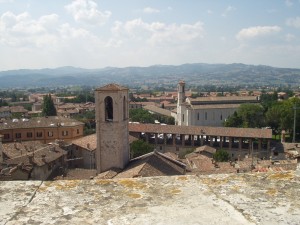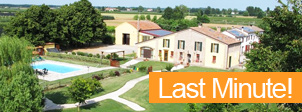Details:

Gubbio
Nestling at the foot of Mount Ingino, Gubbio is one of the oldest cities of Umbria, extremely well preserved during centuries and rich of monuments testifying its glorious past. The city is closely tied to the history of St. Francis, especially the encounter with the wolf in Gubbio Francis took refuge after being expelled from Assisi, which is why the city is considered the second capital Franciscan. But Gubbio is also traditionally called the “town of fools,” referring to the proverbial unpredictability of Gubbio.
Not to be missed!
1. The Tables Egubine
2. Teatro Romano
3. Palazzo dei Consoli
4. Square Wall
5. La Corsa dei Ceri
About Gubbio
Testimony of the ancient origins of the Tables of Gubbio are Eugubine, one of the most important Italian document, and especially the Roman Theater just outside the walls and beautifully preserved, so that in summer becomes a backdrop for impressive performances of classical authors.
The town is dominated from above by the Basilica of St. Ubaldo housing the remains of the Patron uncorrupted. The proud city complex formed by the Palazzo dei Consoli dating from the early fourteenth century, the place became the symbol of the city, along with Wall and Praetorian Palace Square. The pure lines are found in Renaissance palace and the Palazzo del Bargello Properties, with its famous “Fountain of the Mad”, which traditionally gives the “driver’s mate” to anyone who turns three times around in a hurry.
Among the most important events taking place in the city deserves a particular note the historic commemoration of the Palio della Balestra, held last Sunday of May each year faithfully interpreting this contest of arms dating from the twelfth century and which celebrated between blasts of horns and fluttering of flags in the picturesque Piazza Grande.
But the most celebrated event in the city of Gubbio is undoubtedly the Corsa dei Ceri, a unique event that takes place every year since the twelfth century, also May 15 and involving the entire population of the city. Impressive and striking spectacle of hundreds of egubini carrying on their shoulders the three Candles (heavy machinery around 400 kg each) running in a precarious balance through the medieval streets of the city and up the hill.

Comments are closed.